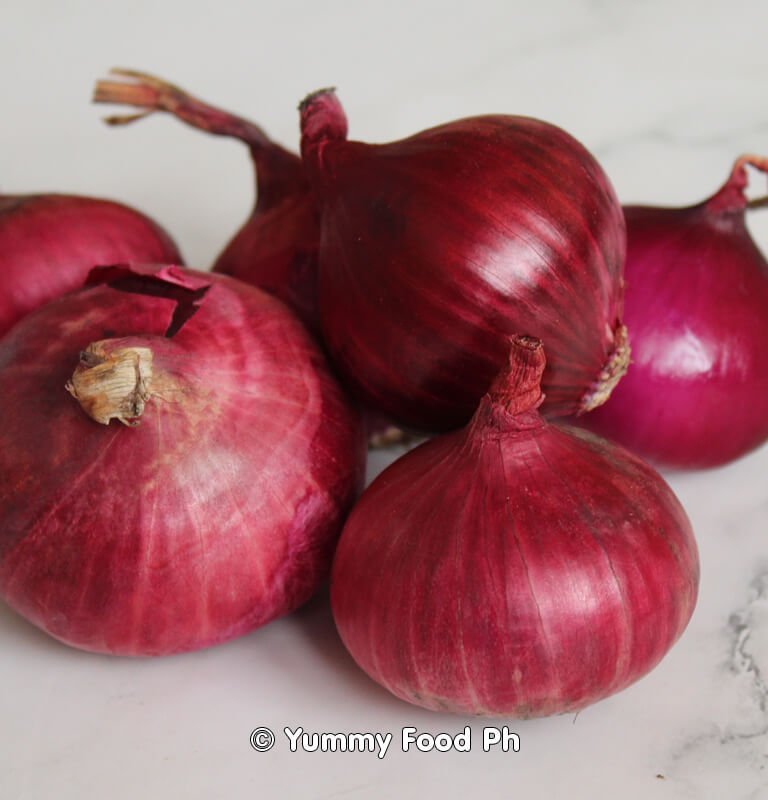Red Onion (Pulang Sibuyas): The Vibrant Allium with Global Appeal
Introduction
Red onions (Allium cepa), known as pulang sibuyas in Tagalog, stand out in the allium family for their striking purple-red flesh and distinctive sweet-sharp flavor profile. These versatile bulbs have been cultivated for over 5,000 years, evolving from wild ancestors in Central Asia to become a kitchen staple across continents. Their dual role as both a flavor enhancer and visual garnish makes them indispensable in culinary traditions worldwide.
Distinctive Characteristics
- Appearance:
- Deep purple skin with reddish-white concentric rings
- Medium to large bulb size (2-4 inches diameter)
- Juicy, crisp texture when raw
- Flavor Profile:
- 30% sweeter than yellow onions (6-8% sugar content)
- Mild pungency (50-100 ppm pyruvic acid)
- Hints of peppery sharpness when raw, caramelized sweetness when cooked
Culinary Applications
Preferred Uses:
- Raw Preparations:
- Salads (Greek, Middle Eastern fattoush)
- Salsas and chutneys
- Sandwich toppings
- Ceviche garnish
- Cooked Dishes:
- Quick-pickled for tacos/banh mi
- Charred in kebabs
- Caramelized in French onion soup
- Stir-fried in Asian dishes
Nutritional Benefits:
- Rich in anthocyanins (powerful antioxidants)
- Contains quercetin (anti-inflammatory compound)
- Good source of vitamin C and chromium
Global Cultivation
- Top Producers: India, China, United States
- Growing Conditions:
- Thrives in well-drained soil (pH 6.0-6.8)
- Requires 100-120 days to maturity
- Day-length sensitive (long-day varieties preferred in temperate zones)
Storage & Selection
- Choosing: Firm bulbs with shiny, intact skins
- Storing:
- 45-55°F with 65-70% humidity (lasts 2-3 months)
- Avoid refrigeration (becomes mushy)
- Preserving:
- Pickling (vinegar preserves color)
- Dehydrating into onion powder
Cultural Significance
- Philippines: Essential in sinigang and adobo
- Mexico: Key in pico de gallo
- India: Base for curry pastes
- Middle East: Garnish for mezze platters
Conclusion
Red onions bridge the gap between culinary utility and visual artistry. Their ability to transition from sharp crunch to mellow sweetness, combined with their eye-catching pigmentation, ensures their continued dominance in global cuisines. Whether lending color to a summer salad or depth to a winter stew, pulang sibuyas remains one of the most democratic ingredients – equally at home in street food and haute cuisine. Their year-round availability and culinary flexibility guarantee this vibrant allium will continue enhancing dishes for generations to come.
These ingredients are frequently used in culinary preparations.
Visit us on YouTube: Yummy Food PH

